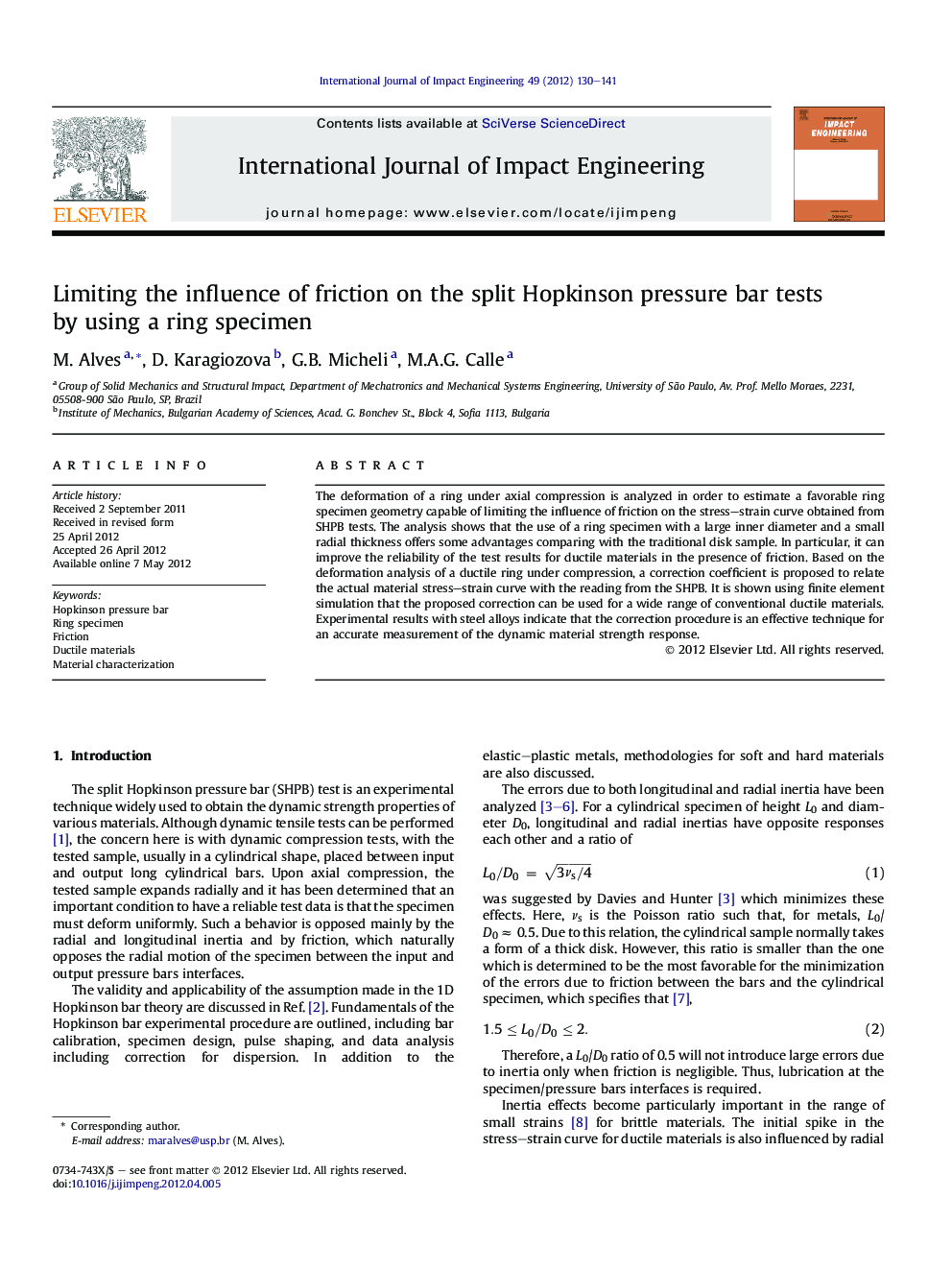| Article ID | Journal | Published Year | Pages | File Type |
|---|---|---|---|---|
| 783085 | International Journal of Impact Engineering | 2012 | 12 Pages |
The deformation of a ring under axial compression is analyzed in order to estimate a favorable ring specimen geometry capable of limiting the influence of friction on the stress–strain curve obtained from SHPB tests. The analysis shows that the use of a ring specimen with a large inner diameter and a small radial thickness offers some advantages comparing with the traditional disk sample. In particular, it can improve the reliability of the test results for ductile materials in the presence of friction. Based on the deformation analysis of a ductile ring under compression, a correction coefficient is proposed to relate the actual material stress–strain curve with the reading from the SHPB. It is shown using finite element simulation that the proposed correction can be used for a wide range of conventional ductile materials. Experimental results with steel alloys indicate that the correction procedure is an effective technique for an accurate measurement of the dynamic material strength response.
► Friction correction for Hopkinson bar compression tests is presented. ► Analytical model is developed and explored. ► Model is verified by finite element analysis and experiments. ► Traditional Hopkinson bar analysis needs a correction factor in the stress.
